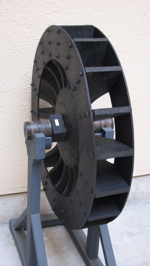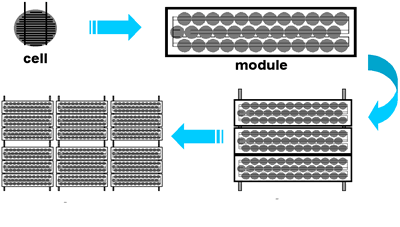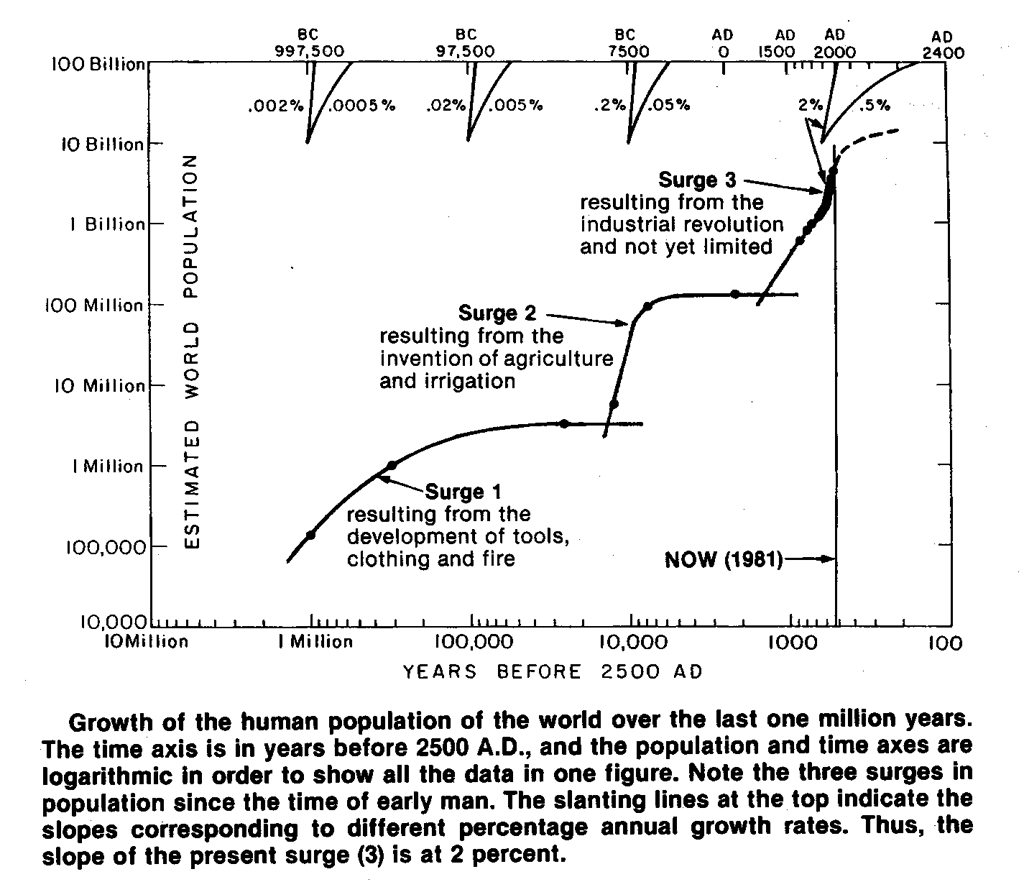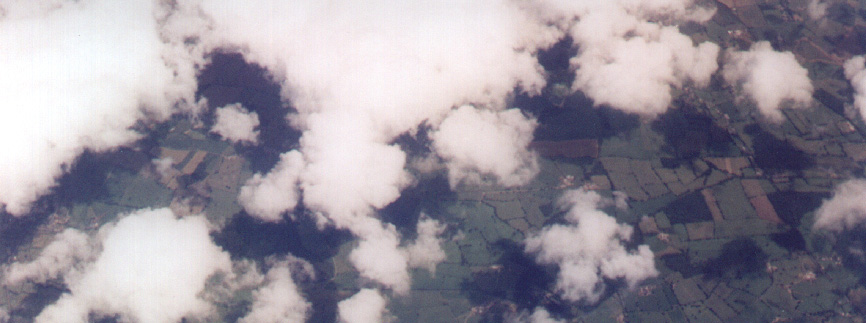Consequences of urban technical complexity & contentment.
City streets are:
"Not the cluster of magnificent forms and spaces; it is the long and empty view, of traffic lights . . . leading to an interstate . . . . The highway never seems to end"
John Brinkerhoff Jackson, 1994.
Los Angeles set next to
Chicago, Grant Park, beside Lake Michigan
JVS; 2004.
Navigating the site:

![]()

Technology
Edward Hopper, Early Sunday Morning, 1930
The role of population growth in driving technical change as in the cases of the Neolithic revolution, the mechanical, industrial and atomic advances in tools based on new modes of power.
"There is no need to dwell on the ever-increasing importance of mechanical time in modern America with our insistence on schedules, programs, timetables, and the automatic recurrence of events – not only in the workplace but in social life and celebrations."
Jackson, 1994, p. 160.
" . . . be reminded that this reverence for the clock and the calendar has robbed much social intercourse of its spontaneity and has in fact relegated place and a sense of place to a subordinate position in our lives."
Jackson, 1994, p. 160-161.
two kinds of tool complexes | step ladder | three periods | six advances | home
Survival technology refers to the tools used to sustain a living for populations. Such related tool complexes that allow people to grow food, irrigate their fields, or transport produce for mechanical processing and packaging requires a mastery of fire, plants, animals and water.
It was the use of fine technology in the mastery of water and fire that allowed a sort of elaboration of tools that were not essentially necessary for survival, but brought a sort of added set of features that Arnold Pacey, physicist and historian of tools, has called "fine technology" because it required a precision use of devices to achieve even an entertaining effect let alone sustain growing dependency of people on their tool complexes and supply networks. In the case of fountains, the artifice incorporated a functional blend of useful tools and beautiful results.
A Roman waterwheel in comparison to an Arab fountain in the Alhambra.
Discerning types of capabilities with tool complexes
Solar electricity is produced from a series of connected photovoltaic cells.
1) survival versus fine technology:
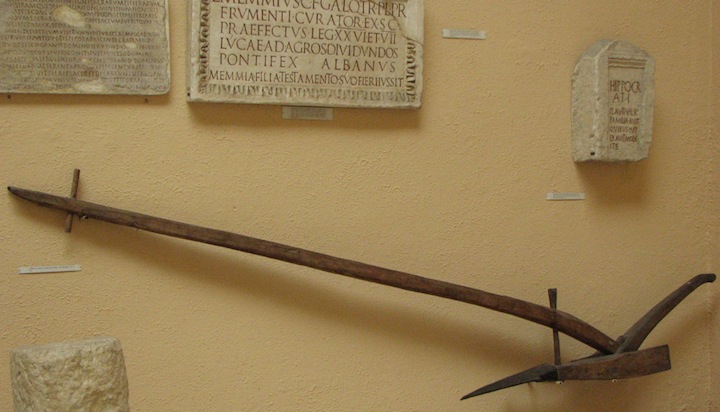
A Roman plow is survival technology while a clock is based on fine technology.
2) mechanized versus automated technology:
Brief description
Vast changes caused by the development of technology begin to accumulate and when orchestrated they have impacts far beyond even the combined influences of two or more forms of motive power cause changes in the layout of buildings or the dispersal of the population.
One way to think about the relation of new tools development to population is that technology allows the production of wealth that can sustain a larger population. As the population grows new tools are invented or more widely dispersed and the population grows further.
two kinds of tool complexes | step ladder | three periods | six advances | home
past present Modern Early modern Medieval Ancient Neolithic eras Paleolithic date 20,000 ya 10,000 ya 200 BC 1300 AD 1700 AD 1850 AD 2000 AD As populations grew in both size and density people became accustomed to an array of technological devices that sustain more food production, reliable water delivery systems and effective transportation networks that enabled cities to service and not just harbor these densely clustered and rising populations.
two kinds of tool complexes | step ladder | three periods | six advances | home
Three periods of technical changes induced by new means of motive power for tools and devices were described by Lewis Mumford.
technological periods Paleotechnical Eotechnical Neotechnical ancient medieval early modern Lewis Mumford, historian of tools and urbanization, divided the immediate past into technological periods and their effect on urban populations with respect to the motive power that was used primarily in each era from water mills, to wind mills, and the perfection of the steam engine.
Cities began with the Neolithic, when the domestication of plants and animals allowed for concentrations of sedentary populations in villages and towns. The process of moving from Paleolithic to the present exploitation of tools gives the false impression of progress, but the population presses against the means of feeding, housing and clothing ever greater numbers.
two kinds of tool complexes | step ladder | three periods | six advances | home
Ages, materials & sources of motive power altered tool complexes:
Paleolithic changes rested on the domestication of fire (survival)
Neolithic changes depended on the domestication of animals & plants.
ancient technology rested on the control of water. (fine)
medieval technology added wind to water mastery. (survival and fine)
early modern society used steam from water to master machinery. (fine)
modern society has added electricity to steam engines and the mastery of wind and water in automated systems or networks of power. (fine)
What appears to be an advance in any era or at any stage from survival to fine techniques are really two sided swords that bring with every advantage a price that may have to be paid because greater numbers of people are supported by every technical development, unless the intelligence to maintain the tool complexes is widely disseminated, the tools can fall into disuse and techniques become forgotten.
two kinds of tool complexes | step ladder | three periods | six advances | home
"History has the cruel reality of a nightmare and the grandeur of humans consists in their making beautiful lasting works out of the real substance of that nightmare. . . it consists in transforming the nightmare into vision, in freeing ourselves from the shapeless horror of reality --if only for an instant-- by means of creation."
Octavio Paz, 1950

Pacey Meaning | Syllabus | Core | Pursell | Pursell Contents
Three facets of technology and tools
"The important thing is to not stop questioning, curiosity has its own reason for existing."
![]() John Brinkerhoff Jackson, A Sense of Place, A Sense of Time. New Haven: Yale University Press, 1994.
John Brinkerhoff Jackson, A Sense of Place, A Sense of Time. New Haven: Yale University Press, 1994.
-
problem solving index.
-
Antonyms & Synonyms.
Terms | Glossary | Word webs | Basic vocabulary | Advanced Vocabulary
Science Index | Site Analysis | Population Index | Global Warming Index | Nature
This page was renewed on
• 07/27/2006 •
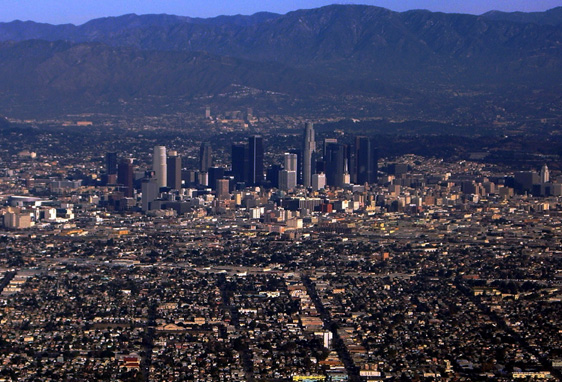
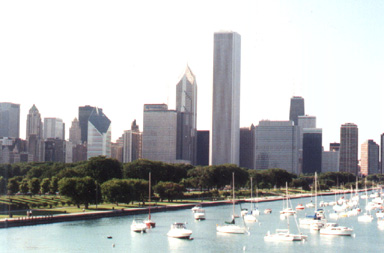
.gif)




